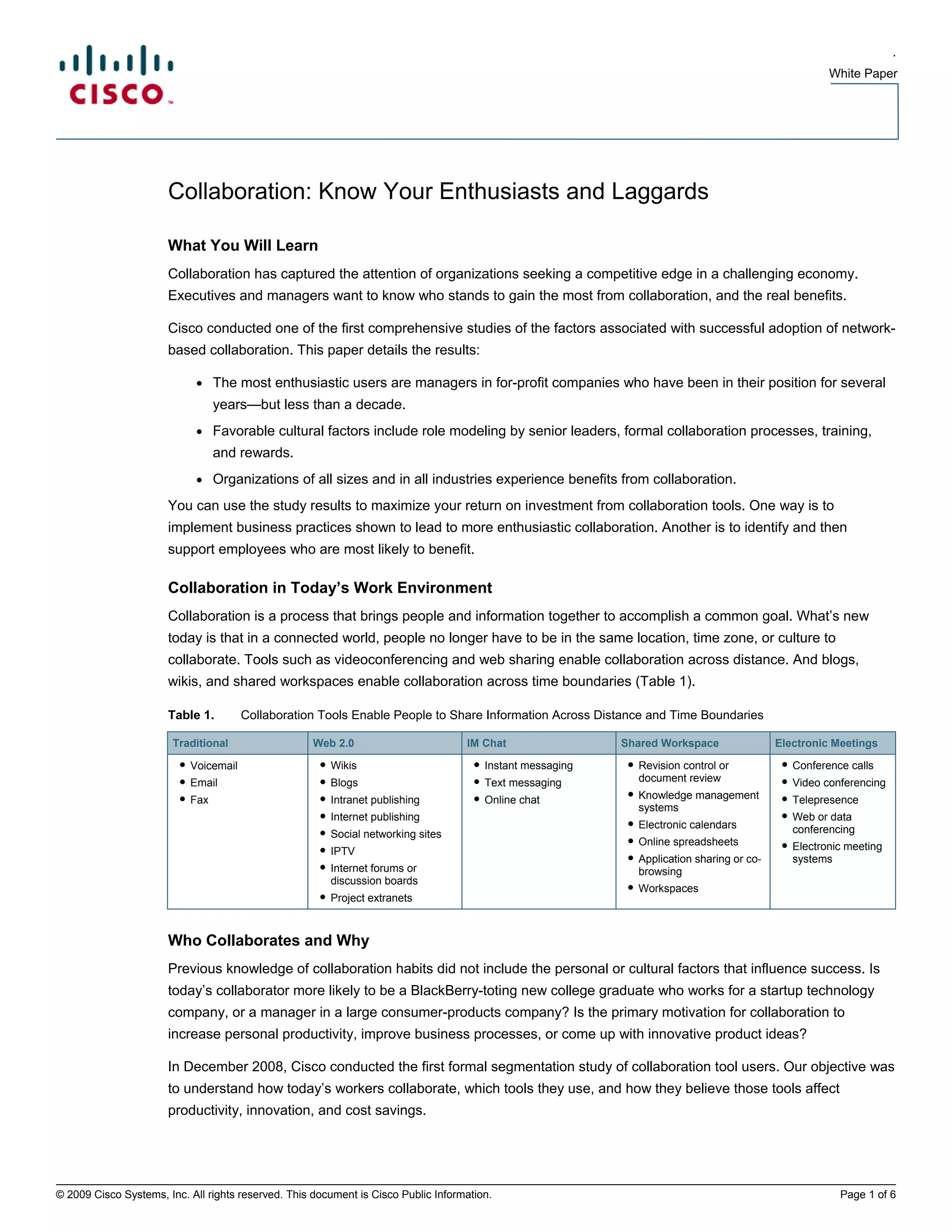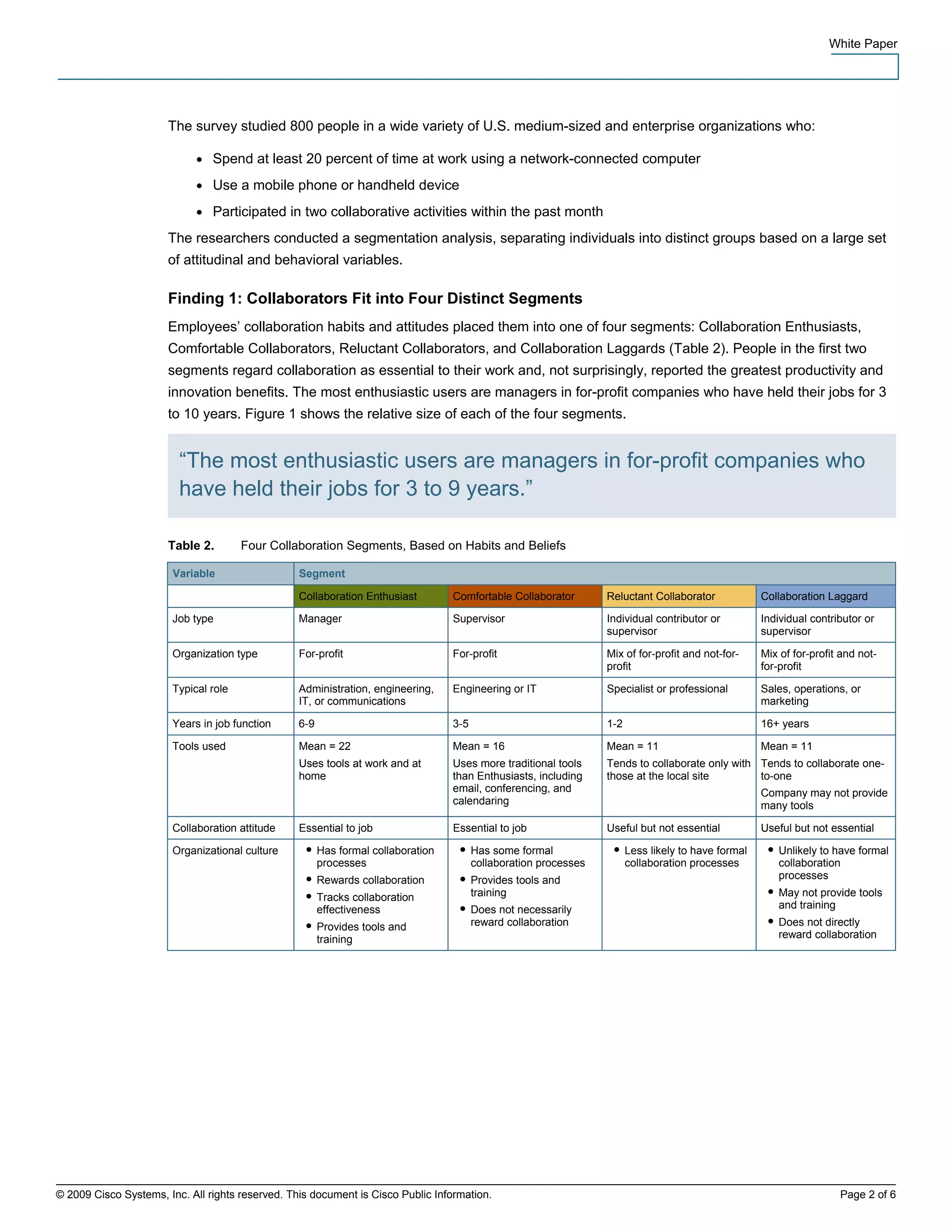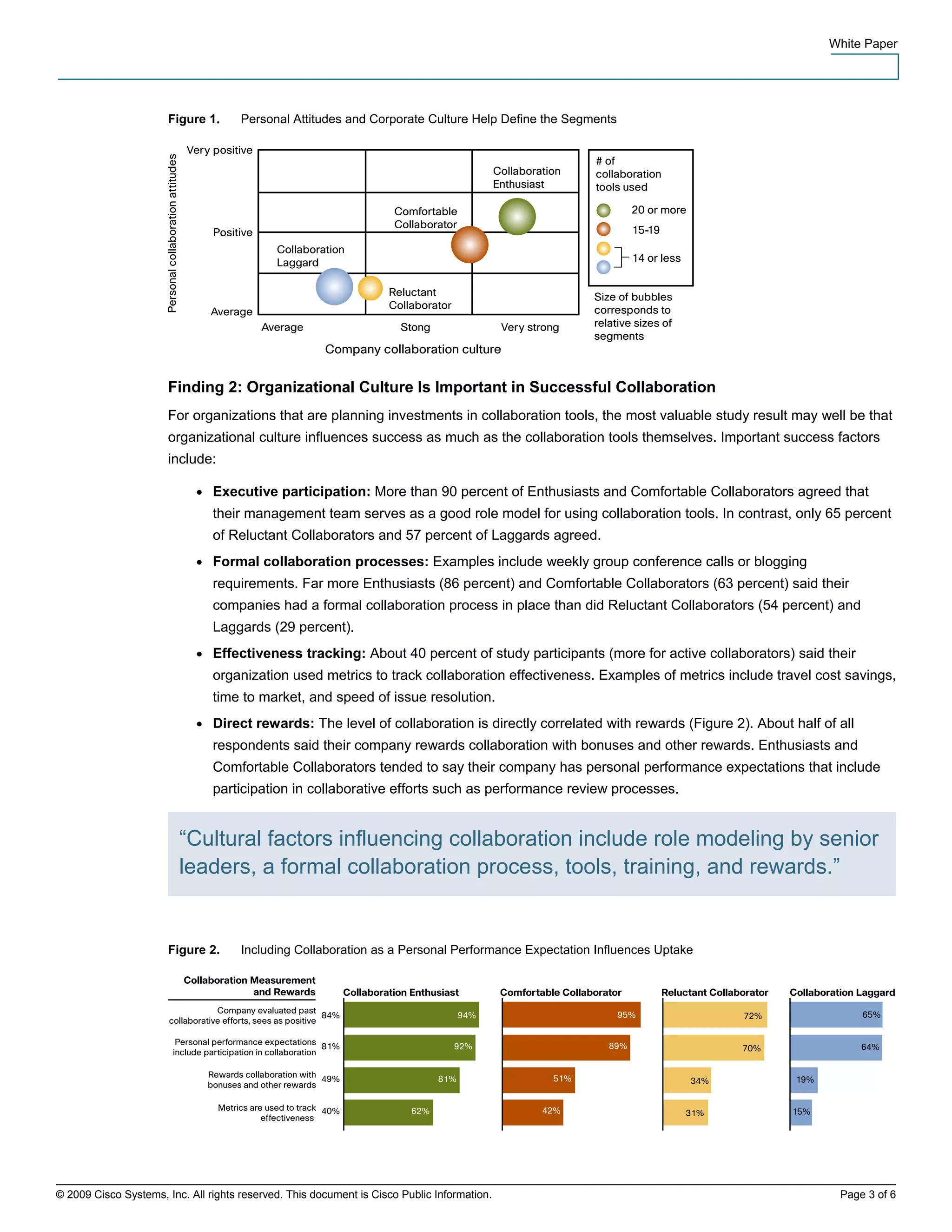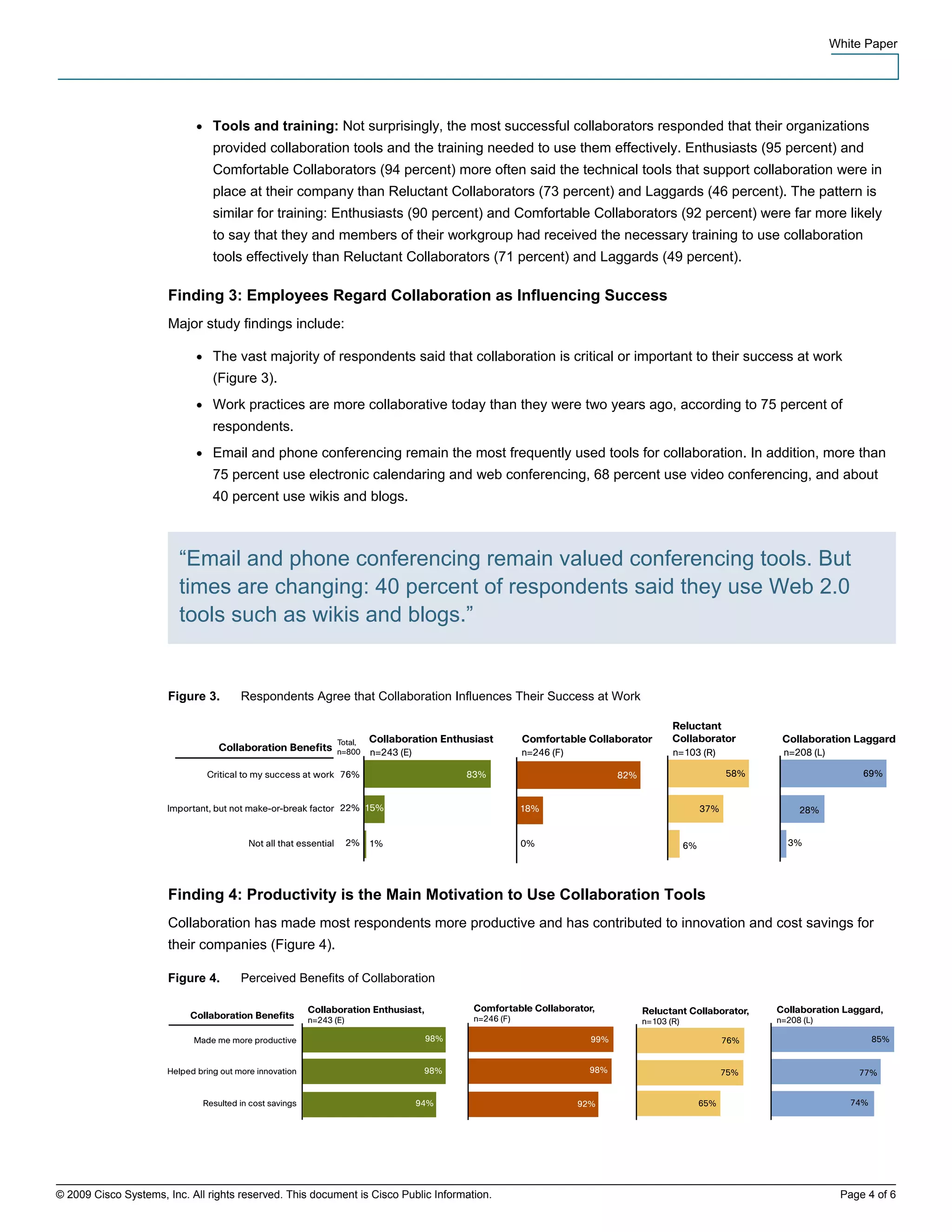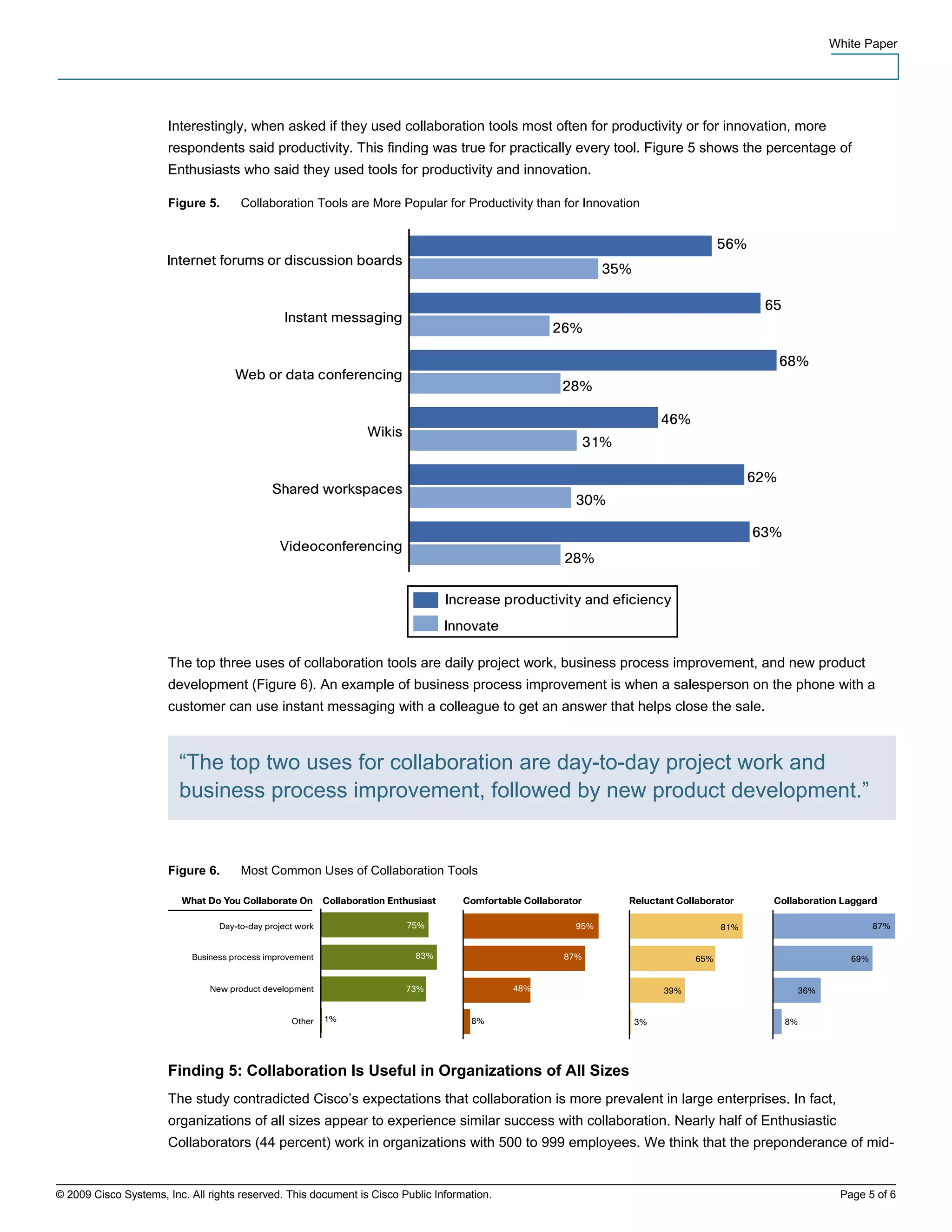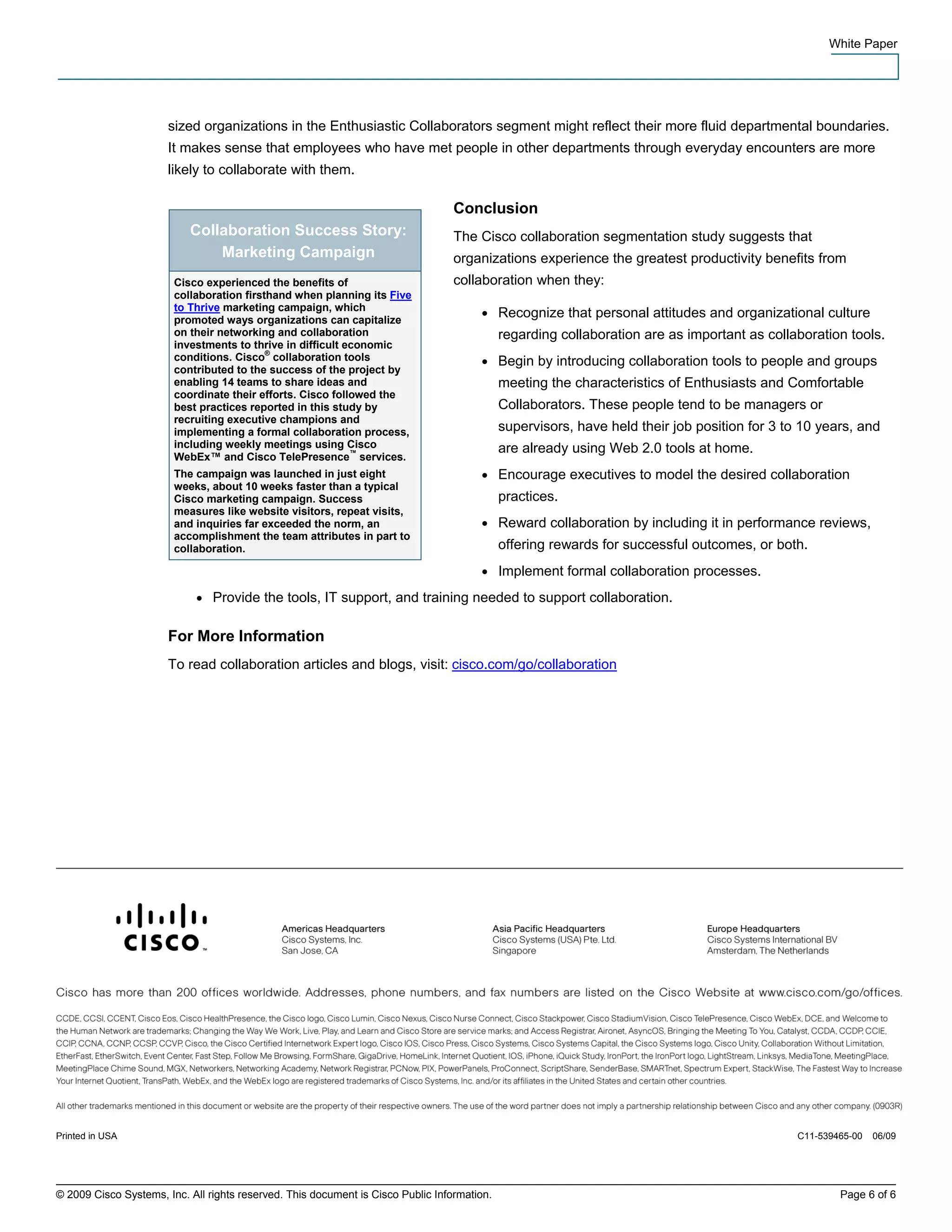The document discusses a Cisco study on collaboration in organizations, revealing four distinct user segments based on their collaboration habits: enthusiasts, comfortable collaborators, reluctant collaborators, and laggards, with cultural factors playing a significant role in successful collaboration. Key findings include the importance of executive participation, formal collaboration processes, and effective tracking of collaboration's impact on productivity and innovation. Overall, collaboration tools are beneficial across organizations of all sizes, with emphasis on training and support for effective use.
